Switch to the mobile version of this page.
Vermont's Independent Voice
- News
- Arts+Culture
- Home+Design
- Food
- Cannabis
- Music
- On Screen
- Events
- Jobs
- Obituaries
- Classifieds
- Personals
Browse News
Departments
Browse Arts + Culture
View All
local resources
Browse Food + Drink
View All
Browse Cannabis
View All
Browse Music
View All
Browse On Screen
Browse Events
View All
Quick Links
Browse Classifieds
Browse Personals
-

If you're looking for "I Spys," dating or LTRs, this is your scene.
View Profiles
Special Reports
Pubs+More
Vermont Schools Are Banning Smartphones to Limit Distractions
Phones and social media are affecting young peoples' ability to focus and hurting their mental health, so schools are rolling out restrictions.
Published September 4, 2024 at 10:00 a.m. | Updated September 11, 2024 at 10:59 a.m.
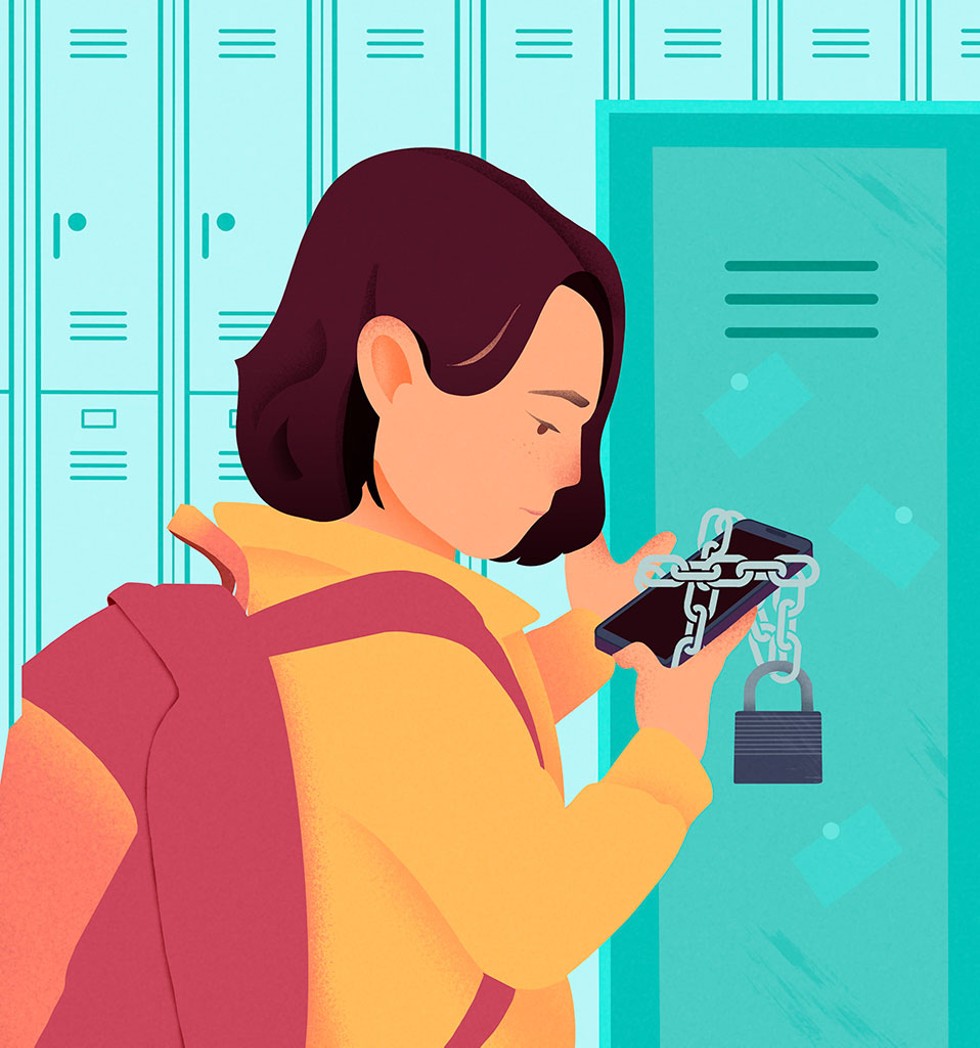
- Diana Bolton
Help us pay for in-depth stories like this one by becoming a Seven Days Super Reader.
When students enter Erin Carter's math class at Spaulding High School in Barre, they put their phones on a counter on one side of the room. Carter then makes sure the total matches the number of students in the classroom.
It's a ritual the 20-year classroom veteran introduced a decade ago to address an issue that most every high school and middle school teacher is now dealing with: how to establish an environment where kids can focus and learn, free from the distraction of digital devices.
So far, Carter's school has left it to teachers to set their own rules on student cellphones in the classroom. But in several districts across Vermont this fall, schools are introducing stricter policies to answer widespread worries that phone use is fragmenting young peoples' attention and diminishing their ability to interact with others.
Several, including Harwood Union Middle and High School in Duxbury and Thetford Academy in Thetford Center, have purchased lockable pouches in which students are required to store their phones during school hours. Others are forbidding use of the devices only during instructional time. Students got their first taste of the new rules when classes resumed last week and reported a smooth start.
The experiences of these schools will likely help inform Vermont lawmakers, who in January will consider statewide legislation aimed at banning phones during the school day. Vermont could join eight other states that have restricted phones, including Florida, Indiana, Louisiana and South Carolina. Large urban districts including Los Angeles and New York City have also announced impending bans.
The issue has taken on greater urgency amid research findings that social media — used "almost constantly" by more than one-third of 13- to 17-year-olds, according to a Pew Research Center study — has contributed to a sharp increase in youth anxiety and depression. Last year, U.S. Surgeon General Vivek Murthy pronounced social media "a profound risk of harm to the mental health and well-being of children and adolescents."
Even as the pandemic prompted a greater reliance on computers and online technology in learning, Vermont school administrators say they hope that prohibiting phones will create an environment where authentic, face-to-face social contact is a regular occurrence and students learn to manage awkwardness and boredom without reaching for their devices.
The phone-free movement is gaining traction among key groups, including the statewide teachers' union and parents.
"If we can't get a handle on this in our schools," said Don Tinney, president of the Vermont chapter of the National Education Association, "where will we get control over these digital devices?"
Vermont teachers have watched with growing frustration as smartphones became ubiquitous among teens, and with them a host of related interruptions. Parents regularly text their children in the middle of the day. Snapchat, TikTok and Instagram — with their easy messaging capabilities, nonstop notifications and shrewdly designed infinite scroll features — exert a constant pull. Students sometimes take photos or videos of each other without consent, which can lead to cyberbullying.
When smartphones first became commonplace, Carter said, many teachers believed they could prevail if their lessons were engaging enough. But that hope has evaporated in the face of advances in digital devices and the introduction of smartwatches and AirPods.
"To ask the kids to self-police is not working," said Carter, who would like to see more uniform guidelines at her own school in Barre. "It's an addictive thing at this point."
Locked In
click to enlarge 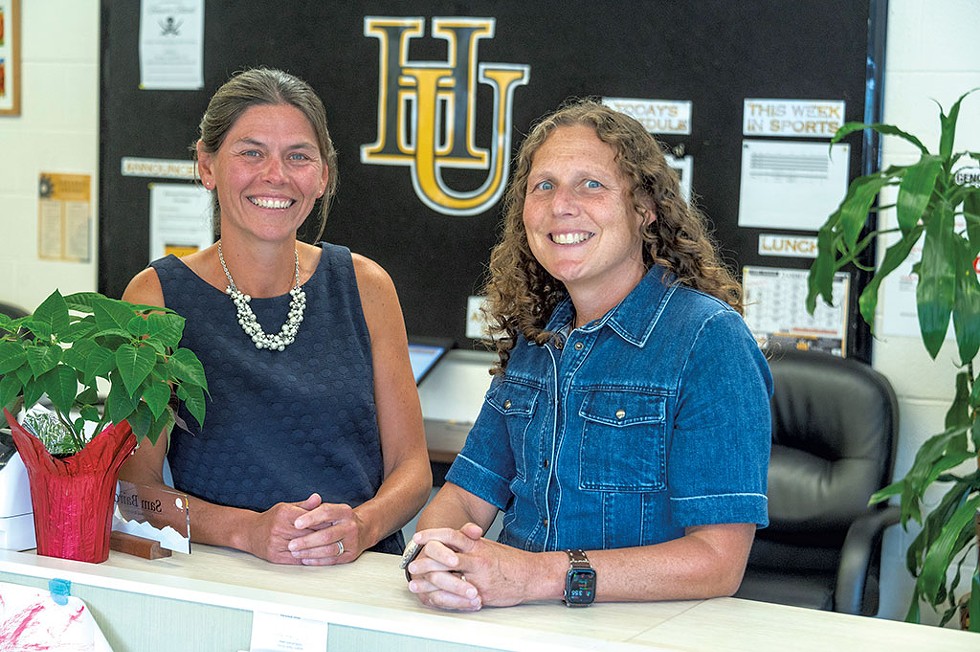

- Jeb Wallace-Brodeur
- Harwood Union Middle and High School principals Meg McDonough, left, and Laurie Greenberg
This fall, students at Harwood begin their school day by powering off their phones and slipping them, along with smartwatches and earbuds, into a slim fabric pouch that closes with a magnetic lock. They can keep their locked devices with them but aren't able to use them until the end of the school day, after unlocking the pouch at a magnetized dock monitored by school staff. Students who skirt the rules — by breaking into their pouch or putting a dummy phone in the pouch, for example — face disciplinary action.
Thousands of schools in all 50 states and 27 countries use the $30 Yondr pouches, but Harwood is one of just two high schools in Vermont so far that have purchased them, using the last of their federal COVID-19 relief money.
The move to turn Harwood into a phone-free school followed months of discussion with staff, according to coprincipals Meg McDonough and Laurie Greenberg. A consensus emerged that students were having difficulty paying attention to teachers and interacting with their peers, and that phones, with their incessant dings and buzzes, disrupted learning. High school students had been expected to put their phones away during class, but enforcement varied from teacher to teacher. Middle school students were required to keep their phones in their lockers, but that led to a mad dash to check phones in between classes.
"We want to create a culture and a community where students feel safe and feel a sense of belonging," McDonough said, "and you can't do that if you're not connecting with people."
Once Harwood school officials decided to go phone-free, administrators held a series of discussions last spring to explain the rationale.
Harwood junior Cashel Higgins, who served as a facilitator in separate discussions with community members and students, said phones have long felt like a problem. Students pull them out when they get tired of doing work in class, he said, while the lunchroom is filled with people staring at their devices rather than chatting.
The reaction to the ban was mixed, Higgins said, with some parents concerned about not being able to contact their child during an emergency and some students fretting that, without their phones, they would have trouble planning for afterschool activities.
To help ease the transition, students asked that teachers provide fun opportunities to socialize, such as outdoor walks or card games.
"I think that every student in the school does know they're addicted to their phone," Higgins said, "but at the same time, they don't want to change because it's easier not to."
McDonough and Greenberg, both parents of teens, said they'll have school counselors available to work with students who feel anxiety over being separated from their phones. They plan to check in with students about the change throughout the year.
Thetford Academy, which serves around 315 middle and high school students, had barred phones during class time for seven years. But enforcement became inconsistent and the reliance on digital technology during the pandemic "kind of blew everything up," head of school Carrie Brennan said.
This school year — with some distance from the pandemic and a fuller understanding of the harm caused by smartphones and social media — seemed like the right time to strengthen Thetford's guidelines, Brennan said.
Parents have been mostly supportive, she said, but several worried they would be unable to text their children about daily logistics. Brennan encouraged them to call the main office or email their child.
When Thetford administrators explained the new rules in letters to students over the summer, some reacted with outrage, Brennan said, questioning why everyone was being punished for the excesses of a minority.
"We've tried to frame it as, 'This isn't a punishment,'" Brennan said. "'Maybe some of you will ultimately see it as a gift.'"
Intro to Addiction
Yondr pouches aren't the only tools that schools are using to curtail students' phone use. The South Burlington School District has ordered locking wooden boxes with slats. Middle school students are expected to put their digital devices in the boxes for the entire school day. High school students store their devices in the same boxes during each class period but can retrieve them during breaks.
In the Lamoille South Supervisory Union, which serves pre-K to grade 12 students in Stowe, Morristown and Elmore, students are now required to keep their phones in their lockers during the entire school day. Teachers and parents strongly supported the rule, superintendent Ryan Heraty said.
For years, middle school students in Winooski have been required to keep their phones powered down in their lockers or backpacks. Starting in fall 2023, high school students have had to put their phones away during class but are allowed to use them between classes and during lunch. Students who don't follow the rules lose their phones for the day.
The procedures have led to a decrease in reports of bullying and behavioral problems, according to Winooski Middle and High School coprincipal Jean Berthiaume.
"We've got to learn to live with these devices in a balanced way," he said.
Berthiaume's view aligns with the stance of the Vermont chapter of the American Academy of Pediatrics, which says that "an outright ban" of phones in schools disregards "the complexity of these types of situations."
University of Vermont pediatrician Heidi Schumacher, who serves on the American Academy of Pediatrics' Council on School Health, said doctors should help young people examine how and why they use their phones and social media, rather than dictating what they should do. She called for more public pressure to push social media companies to make their platforms less addictive.
But other medical professionals believe the issue warrants a more aggressive response.
Elizabeth Hunt, a physician with Timber Lane Pediatrics in South Burlington, said that as smartphone sales surged around 10 years ago, she began to see an alarming rise in mental health problems among young people, including self-harming behavior.
Exposure to smartphones is "really a young brain's first introduction to addiction," Hunt said. She sees patients who tell her they can't eat, fall asleep or ride to school without their phone at hand. Young patients also frequently report feeling isolated, having difficulty focusing and checking their phones constantly.
Rampant phone use, Hunt said, is "interrupting the attention and joy that kids get out of what I would call real life experiences — learning new material, being with other people, laughing, playing sports, creating art, communicating, belonging, recreating."
Bud Vana, a Jericho pediatrician and child psychiatrist, said mental health issues among youth, including suicidal thoughts, are more intense and show up at a younger age than in the past, a development he attributes in large part to early exposure to smartphones and social media. Sleep, physical activity and social connectedness — things that help children manage their mental health — are diminishing as young people spend more time online.
Hunt and Vana favor guidelines that separate students from their phones for the entire school day.
"It's like taking the pacifier away from a toddler," Hunt said. "You just do it, and they adapt, and they feel capable and empowered."
Help us pay for in-depth stories like this one by becoming a Seven Days Super Reader.
Policy Talk
click to enlarge 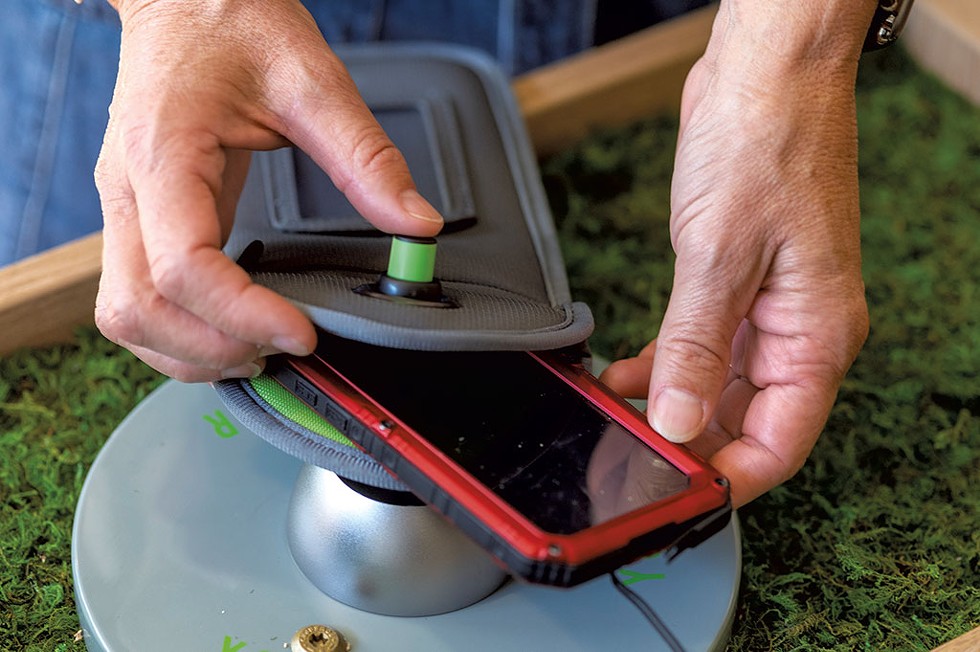

- Jeb Wallace-Brodeur
- Unlocking a cellphone pouch with the Yondr system at Harwood Union Middle and High School in Duxbury
During the most recent legislative session, state lawmakers took up S.284, a bipartisan bill that would have prohibited the use of digital devices and social media in all Vermont schools. It also allowed students to opt out of using digital technology for instructional purposes.
Lawmakers had guidance on the issue from a group of concerned citizens that included Laura Derrendinger, a public health nurse and mother of four from Middletown Springs who has widely touted research supporting phone-free schools and promoting ways to implement restrictions.
But the legislation had an unlikely detractor: Vermont Health Commissioner Mark Levine, who called the bill "heavy-handed and unrealistic" and warned against drawing facile connections between social media and severe mental health problems.
Levine also argued that students from some marginalized groups, such as members of the LGBTQ community, often rely on social media to find support and connection with others.
"Complicated problems require complicated, precise solutions, and may not be conducive to overly broad and reactive policy solutions," Levine wrote in talking points that accompanied his testimony before the Senate Education Committee.
At the same time, the Vermont-NEA, which represents 13,000 educators, objected to the provision allowing students to opt out of using digital technology at school. It would have burdened teachers with providing alternative methods of instruction, they argued. The Vermont Principals' and Superintendents associations also expressed reservations.
The bill ultimately died in the Senate, but the broader conversation over phones in schools has gained momentum in the months since. Derrendinger has built a coalition of dozens of like-minded parents who have become advocates for prohibiting phone use in their own school districts. And a new, best-selling book by social scientist Jonathan Haidt that argues for phone-free schools, The Anxious Generation: How the Great Rewiring of Childhood is Causing an Epidemic of Mental Illness, is getting heavy rotation among parents and educators.
Rep. Angela Arsenault (D-Williston), a Champlain Valley School District board member and parent of two teens, said she plans to introduce more narrowly tailored legislation this coming session. It would require every district to adopt a policy that prohibits student use of personal electronic devices during the school day. An ideal policy, Arsenault said, would require phones to be locked up and not accessible from "bell to bell." Such a policy would still allow the use of computers for educational purposes, she said.
The planned legislation would prohibit school districts from communicating directly with students through social media. Some incoming high schoolers are required to download apps such as Snapchat in order to stay in touch with their sports teams, Arsenault said. In some cases, it is their first exposure to social media.
The Agency of Education hasn't taken a position on the issue, saying through a spokesperson that it "is actively looking into the best statewide approach to support schools and districts in managing cell phone use." In a statement to Seven Days last month, Levine wrote that the health department would provide the Agency of Education with "any public health guidance that is needed," but did not say if he'd rethought his earlier opposition to outright phone bans.
This time around, though, the Vermont-NEA appears to be on board. Tinney, its president, said that while digital technology is an important classroom tool, allowing students to use phones is altogether different.
"We know that mental health issues and behavioral issues are major issues that our members are facing right now," Tinney said, "and cellphone use is part of that."
Some administrators say that a statewide policy around cellphone use would likely help them justify stricter rules in their own schools.
"When you stand alone, there can be a lot more pushback," said Greenberg, the Harwood coprincipal.
Understanding by Doing
Most 17-year-olds don't know what it's like to live without a smartphone. But Uly Junker does. The rising senior at Thetford Academy spent two months of his spring semester engaged in a bold experiment: He traded in his smartphone for a rudimentary flip phone and tracked how it changed his behavior. At first, Junker said, he found himself instinctively reaching for his phone throughout the day. After two weeks, that urge had dissipated.
Junker said he ended up combating boredom by sitting on his porch and listening to music or taking a walk and calling a friend on his flip phone. He did yoga and drank tea at night. He got a lot more sleep and celebrated his first semester of perfect grades.
He transitioned back to a smartphone — with social media apps deleted — this summer in order to communicate via group text with coworkers at his two jobs. But he planned to trade it in for the flip version again soon for his final year of high school.
Still, Junker is torn over his school's new ban. Detaching from his smartphone worked for him, but he doesn't want to tell others what's best for them.
"People have to understand by doing it," he said.
Junker said it might take several weeks to know whether the restrictions are working. That's how long it took him to feel "normal" after he gave up his smartphone.
Atticus Ellis, a senior at Harwood, said the new guidelines will only work if teachers enforce them consistently. He said the first few months will require a major adjustment.
His principals agree.
"To say that everyone's bought in ... it's not the truth," Greenberg said. "I don't think, until you have that time away, are you really going to be able to reflect on the difference."
Harwood's plan hit a brief snag when the school's delivery of Yondr pouches was delayed. Students began the year storing their phones in manila envelopes, but by last Friday, they had started using the pouches. Higgins and Ellis said the first day went smoothly.
"During a study hall I was in, students who normally would be lost in their phones were socializing and playing cards with each other," Higgins reported.
Heraty, the Lamoille South superintendent, said that in his district, the new protocols have been well-received. A high school librarian reported more students are borrowing books to read during their downtime and one teacher said it was "a total game changer."
At Thetford Academy, Brennan, the head of school, is entering the school year with a pragmatic mindset. Locking up students' devices is no panacea for the wider problems presented by phones and social media addiction, she said: "This is seven hours of a 24-hour day. A lot can happen in the other 17 hours."
Instead, she views the new policy as a collective action being taken by her school community to give students a respite from the constant tug of their phones. She believes it will allow them to engage more fully in their learning and forge stronger connections with classmates and teachers.
That, Brennan said, is what school is supposed to be about.
Correction, September 5, 2024: A previous version of this story misindentified the location of Harwood Union Middle and High School.
Help us pay for in-depth stories like this one by becoming a Seven Days Super Reader.
The original print version of this article was headlined "No Phone Zones | To limit distractions and encourage student interaction, more Vermont schools are restricting the use of digital devices"
Got something to say?
Send a letter to the editor
and we'll publish your feedback in print!
About The Author

Alison Novak
Bio:
Alison is the former managing editor at Kids VT, Seven Days' parenting publication and writes about education for Seven Days.
Alison is the former managing editor at Kids VT, Seven Days' parenting publication and writes about education for Seven Days.
More By This Author
Latest in Education
Speaking of...
-

Parents and Schools Put Limits on Phone Use
Aug 20, 2024 -

Maher Madness: Olympic Bronze Medalist Comes Home to Burlington
Aug 15, 2024 -

Q&A: Exploring the Haskell Free Library & Opera House With Hannah Miller
Mar 13, 2024 -

Video: Hannah Miller Visits the Haskell Free Library & Opera House in Derby Line, Vt., and Stanstead, Québec
Mar 7, 2024 -

In Secretive Facebook Groups, Vermont Women Are Crowdsourcing Men's Red Flags
Feb 7, 2024 - More »


































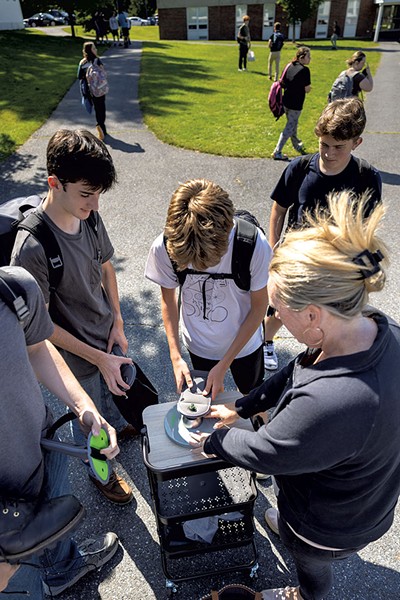
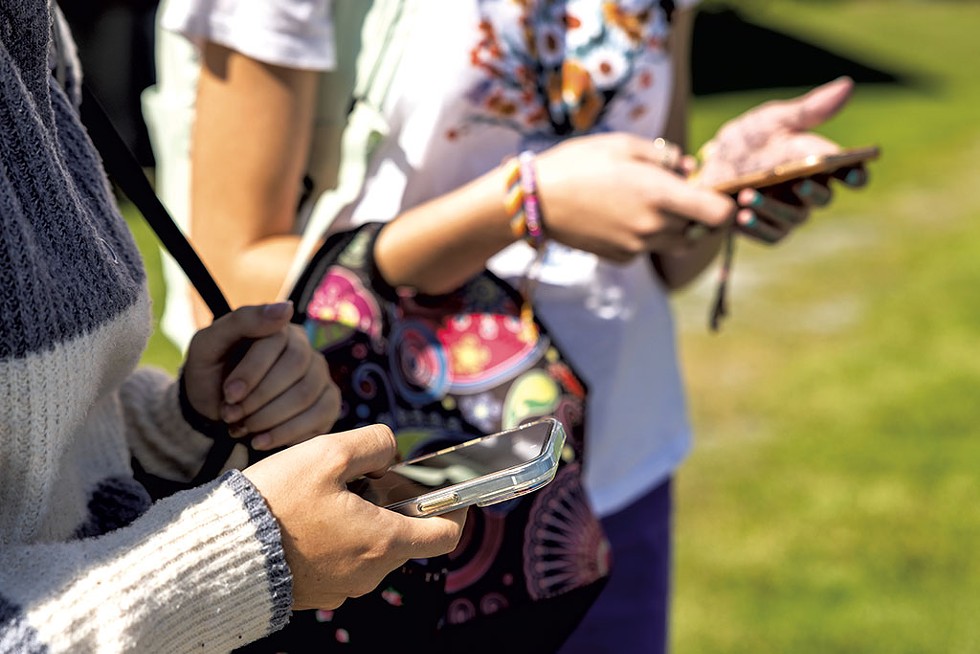
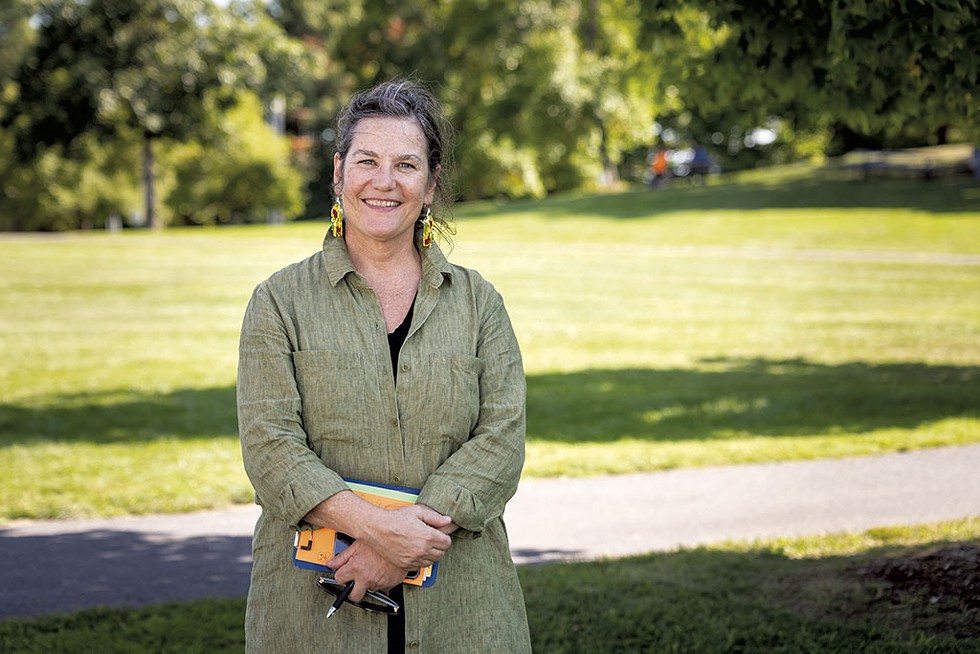








find, follow, fan us: